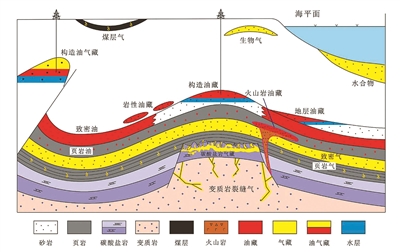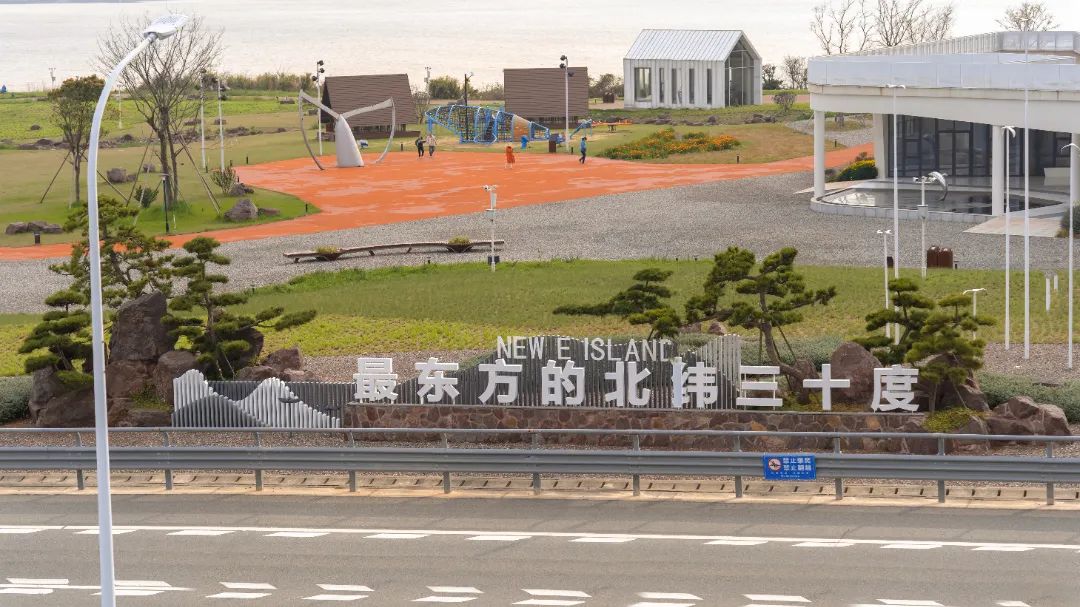serial number
Nominal name
industry
Characteristics of "high pollution and high environmental risk"
one
phorate
pesticide
Production of 4 tons of acid wastewater per ton of products, while there is waste gas pollution; Toxic pesticides, improper storage, transportation and use are easy to cause pollution, crop residues and people poisoning; Belonging to dangerous chemicals and toxic chemicals.
2
isocarbophos
pesticide
Produce waste water from esterification, condensation, methyl chloride and phosphorus-containing intermediate products, and produce HCl and SO.2Exhaust gas; High toxic pesticides, improper storage, transportation and use, resulting in environmental pollution; Hazardous chemicals and highly toxic chemicals
three
isofenphos-methyl
pesticide
The production of 1 ton of products produces 2 tons of acid wastewater and HCl waste gas; High toxic pesticides, improper storage, transportation and use cause environmental pollution and harm beneficial organisms; hazardous chemical
four
Terbutaphos
pesticide
Production of 5 tons of acid wastewater and H per ton of products.2S waste gas; Toxic pesticides, stored and used improperly, will cause harm to the environment, people and livestock; Hazardous chemicals and toxic chemicals
five
Aldicarb
pesticide
10-15 tons of wastewater is produced when 1 ton of product is produced; Highly toxic pesticides mainly cause environmental and groundwater pollution due to improper storage, transportation and use, and are highly toxic to birds and bees; Hazardous chemicals and highly toxic chemicals
six
carbofuran
pesticide
634kgHCL, 86kg distillation residue and 647kg residue were produced in the production of 1 ton product. Improper use of storage and transportation can cause pollution and endanger the safety of people and animals, and attention should be paid to avoid groundwater pollution; hazardous chemical
seven
Methomyl
pesticide
20kgHCl and Cl are produced when 1 ton of product is produced.2Waste gas and 9-10 tons of waste water; High toxic pesticides, improper storage, transportation and use are easy to pollute the environment, so it should be noted that they may be absorbed by mucous membranes and cause poisoning; Hazardous chemicals and toxic chemicals
eight
methyl bromide
pesticide
Toxic to human body, prevent leakage during storage, transportation and use, so as to avoid environmental pollution and harm to human health.
nine
zinc phosphide
pesticide
Dust pollution; High toxicity, if stored and used improperly, may pollute the environment and endanger the safety of people, livestock and birds; hazardous chemical
10
Rodenticide
pesticide
High toxic acute rodenticide, improper storage, transportation and use may cause environmental pollution and endanger the safety of people and poultry; Belonging to dangerous chemicals and toxic chemicals.
11
Rodenticide
pesticide
Generating acidic wastewater; High toxicity, improper storage, transportation and use may cause environmental pollution and endanger the safety of people and animals; Belonging to dangerous chemicals and toxic chemicals.
twelve
Bromadiolone
pesticide
Improper storage, transportation and use may pollute the environment; Belonging to dangerous chemicals and toxic chemicals.
13
Bromocrocidin
pesticide
Produce wastewater containing organic matter; Improper storage, transportation and use may pollute the environment; Belonging to dangerous chemicals and toxic chemicals.
14
Diphacine (sodium)
pesticide
The production of 1 ton of products produces 23 tons of wastewater, Cl2, HCl waste gas and 400kg distillation waste residue; Improper storage, transportation and use may pollute the environment; Belonging to dangerous chemicals and toxic chemicals.
15
lindane
pesticide
Produce residual liquid of distilled oil; High residual pesticides, which remain in the environment, are easy to cause pollution risks and threaten the safety of agricultural products.
16
Pentachlorophenol (sodium)
pesticide
Produce production residues such as pentachlorobenzene, hexachlorobenzene and its residues and HCL waste gas; Toxic to aquatic organisms, not easy to degrade, and improper storage, transportation and use can easily cause environmental pollution, which is restricted by POPs Convention; Belongs to dangerous chemicals and highly toxic chemicals.
17
Dicofol
pesticide
2.55 tons of waste water and hydrochloric acid waste gas are produced in the production of 1 ton of products; When used, it is easy to cause residual risk and endanger crop and environmental safety.
18
methamidophos
pesticide
2.4 tons of aminated wastewater is produced from the production of 1 ton of products; High acute toxicity, improper storage, transportation and use lead to acute poisoning of human and livestock to death, environmental pollution and short-term crop residues; Belonging to dangerous chemicals and toxic chemicals.
19
parathion-methyl
pesticide
Produce methyl monochloride wastewater; Highly toxic pesticides, stored, transported and used improperly, can pollute the environment, endanger the safety of people and animals, pollute crops and cause residues, and endanger food safety; Belonging to dangerous chemicals and toxic chemicals.
twenty
parathion
pesticide
Produce waste water containing ethyl chloride, sodium p-nitrophenol, trimethylamine, sodium chloride and HCl waste gas; Toxic organophosphorus pesticides, improperly stored, transported and used, cause environmental pollution and endanger human and animal safety; Hazardous chemicals and toxic chemicals
21
azodrin
pesticide
The production of 1 ton of products produces 2 tons of chlorinated wastewater and CH.threeCl waste gas; High toxic pesticides, improperly stored, transported and used, cause environmental pollution and endanger human and animal safety; Hazardous chemicals and toxic chemicals
22
phosphamidon
pesticide
High toxic organophosphorus pesticides, improperly stored, transported and used, cause environmental pollution and endanger human and animal safety; Hazardous chemicals and toxic chemicals
23
DDT
pesticide
Produce sulfuric acid waste liquid; It is a high residue pesticide, which remains in the environment, pollutes the environment, fish and crops, and accumulates in human fat through the food chain, endangering human health.
24
Mirex
pesticide
It belongs to persistent pollution organic matter and is difficult to decompose in the environment; hazardous chemical
25
Cadmium-nickel battery
battery
There are pollution problems in the production process and waste batteries; The battery contains a large amount of cadmium, which may lead to the formation of cadmium oxide, sponge cadmium and cadmium-containing dust wastewater (except for military batteries, aviation and trains).
26
Recycled lead (irregular recycling)
battery
Most recycling enterprises are not within the scope of environmental monitoring, and the batteries are disassembled irregularly. The waste lead powder, waste sulfuric acid and waste separator are not recycled reasonably, which leads to serious secondary pollution.
27
Lead-acid batteries with cadmium plates
battery
There are lead fume, lead dust or lead slag and lead-containing and acid-containing wastewater pollution in the production and recycling process; Lead, antimony and cadmium are harmful to human body, at the same time, acid mist corrodes human respiratory system, which poses occupational hazards.
28
Open-type ordinary lead-acid battery
battery
There are lead fume, lead dust, lead slag and lead-containing acid wastewater pollution in the production and recycling process; Lead, antimony and cadmium are harmful to human body, and acid mist corrodes human respiratory system, which poses occupational hazards, and acid mist pollution exists during use.
29
Mercury-containing button alkaline manganese battery
battery
Without a sound and perfect recycling mechanism, waste mercury-containing button batteries have great risks to environmental protection. Once mercury enters the groundwater and the food chain, it will pose great harm to human health. Mercury pollution affects climate change and is migratory.
thirty
Mercury oxide primary battery and battery pack, zinc-mercury battery
battery
Mercury is extremely oxidized, and waste batteries will cause environmental pollution. Once mercury enters the groundwater and the food chain, it will pose great harm to human health. Mercury pollution affects climate change and is migratory.
31
Cylindrical alkaline manganese battery containing mercury
battery
Processing causes serious mercury pollution.
32
Lead-acid battery parts
battery
Processing causes serious mercury pollution and resource consumption.
33
C.i. direct red, C.I. direct blue, C.I. direct black, C.I. direct brown, C.I. direct green, C.I. acid black and C.I. acid red series 43 products (Note 1: product names are attached).
dyestuff
In the production process, a large number of high-concentration mother liquor and washing liquid run away or the products fall into the water body in the transportation accident, causing water pollution; Diphenylamine, a raw material, has strong toxicity, and it will lurk in the human body after inhaling its dust or ingesting it through the skin during wearing, which will induce cancer.
34
sodium bichromate
mineral salt
Every ton of sodium dichromate produces 3 tons of chromium slag, 50-60kg of chromium-containing aluminum mud, 800kg of chromium-containing sodium sulfate, and 20000Nm.three /t sodium dichromate dusty tail gas and chromium-containing wastewater; Chromium slag is highly toxic and classified as national hazardous waste. Sodium dichromate is classified as dangerous goods and highly toxic chemicals. The product has high environmental pollution in the production process, and high environmental risks in the storage, transportation and use process.
35
potassium dichromate
mineral salt
It is prepared by double decomposition of sodium dichromate and potassium chloride or potassium sulfate. The product is orange-red plate crystal, which may catch fire when it comes into contact with combustible materials. Repeated or long-term exposure to low-concentration chromium compounds can lead to chronic upper respiratory tract inflammation, chromium rhinopathy, contact dermatitis and rash (mainly on exposed parts such as face, neck, hands and forearms), damage to liver and kidney, and change of blood system. The incubation period of lung cancer is 10-20 years. Respiratory inflammation, asthma and chrome ulcer may occur after inhalation. Hexavalent chromium is more toxic than trivalent chromium. Chromium is also an allergen, hexavalent chromium is irritating and corrosive, and chromium is a carcinogen.
36
ammonium dichromate
mineral salt
The product is an orange-red monoclinic crystal. Ammonium dichromate is a photosensitive substance, which can be reduced to trivalent chromium after exposure. It is a strong oxidant, which can cause explosion when mixed with organic matter, heated, impacted and rubbed. Toxic, inhalation of ammonium dichromate powder will cause inflammation of respiratory organs and nasal cavity. Seriously, it can cause cartilage perforation of nasal septum, damage respiratory organs and even cause pulmonary sclerosis. Is prepared by double decomposition of sodium dichromate and ammonium chloride.
37
potassium chromate
mineral salt
The main production method is double decomposition of sodium chromate and potassium chloride or neutralization of potassium hydroxide and potassium dichromate. Hexavalent chromium is an ingestive poison/inhalation extreme poison, and skin contact may cause sensitivity; It is more likely to cause genetic defects, and inhalation may cause cancer, which is a lasting danger to the environment. The toxicity of hexavalent chromium is 100 times stronger than that of trivalent chromium. If the content of hexavalent chromium in water exceeds 0.1 mg/L, it will have toxic effects on human body. According to the national hygienic standard for drinking water, the content of hexavalent chromium in drinking water and surface water should not exceed 0.05 mg/L.
38
sodium chromate
mineral salt
This product is an intermediate product in the production of sodium dichromate. Its main production method is to mix chromite powder with soda ash, limestone powder and dolomite powder evenly, and then oxidize and roast at about 1050℃. Hexavalent chromium is an ingestive poison/inhalation extreme poison, and skin contact may cause sensitivity; It is more likely to cause genetic defects, and inhalation may cause cancer, which is a lasting danger to the environment. The toxicity of hexavalent chromium is 100 times stronger than that of trivalent chromium. If the content of hexavalent chromium in water exceeds 0.1 mg/L, it will have toxic effects on human body.
39
ammonium chromate
mineral salt
The main production method is to neutralize ammonium dichromate and ammonium hydroxide. Hexavalent chromium is an ingestive poison/inhalation extreme poison, and skin contact may cause sensitivity; It is more likely to cause genetic defects, and inhalation may cause cancer, which is a lasting danger to the environment. The toxicity of hexavalent chromium is 100 times stronger than that of trivalent chromium. If the content of hexavalent chromium in water exceeds 0.1 mg/L, it will have toxic effects on human body.
40
strontium chrome yellow
mineral salt
The main production method is the reaction of strontium chloride or strontium nitrate with sodium chromate. Hexavalent chromium is an ingestive poison/inhalation extreme poison, and skin contact may cause sensitivity; It is more likely to cause genetic defects, and inhalation may cause cancer, which is a lasting danger to the environment. The toxicity of hexavalent chromium is 100 times stronger than that of trivalent chromium. If the content of hexavalent chromium in water exceeds 0.1 mg/L, it will have toxic effects on human body. According to the national hygienic standard for drinking water, the content of hexavalent chromium in drinking water and surface water should not exceed 0.05 mg/L.
41
lead chromate
mineral salt
The main production method is that lead acetate reacts with sodium dichromate or lead nitrate reacts with sodium chromate and chromic anhydride reacts with basic lead carbonate. Hexavalent chromium is an ingestive poison/inhalation extreme poison, and skin contact may cause sensitivity; It is more likely to cause genetic defects, and inhalation may cause cancer, which is a lasting danger to the environment. The toxicity of hexavalent chromium is 100 times stronger than that of trivalent chromium. If the content of hexavalent chromium in water exceeds 0.1 mg/L, it will have toxic effects on human body. According to the national hygienic standard for drinking water, the content of hexavalent chromium in drinking water and surface water should not exceed 0.05 mg/L.
forty-two
chromic nitrate
mineral salt
Chromium nitrate has anhydrous substance and many kinds of hydrates, and the common nonahydrate is purple monoclinic crystal. Hydrated chromium nitrate is weathered in the air, losing some crystal water, and it is easy to deliquesce. Chromium nitrate nonahydrate is soluble in water, acid, alkali, ethanol and acetone, which is toxic. The production method is obtained by reacting chromic anhydride with nitric acid and reducing it with sucrose. The product has high environmental pollution in the production process, and high environmental risks in the storage, transportation and use process.
43
sodium cyanide
mineral salt
Sodium cyanide is a white crystalline powder. In humid air, it tastes slightly bitter almond because of moisture absorption. Soluble in water, the aqueous solution is weakly acidic, and sodium cyanide is a highly toxic product, with a lethal dose of about 1 ~ 2 mg/kg. Its toxic effect is to release cyano group and Fe of oxidized cytochrome oxidase in the body.3+Combined, cytochrome loses the ability to transfer electrons, resulting in respiratory chain interruption, intracellular asphyxia, tissue hypoxia and poisoning. China has listed this product in Category 6, Item 1 (61001) of the List of Hazardous Chemicals.
forty-four
potassium cyanide
mineral salt
Potassium cyanide is a highly toxic product, which inhibits respiratory enzymes and causes intracellular asphyxia. Acute poisoning can be caused by inhalation, oral administration or percutaneous absorption. Oral 50 ~ 100 mg can cause sudden death. Long-term exposure to a small amount of cyanide leads to neurasthenia syndrome, eye and upper respiratory tract irritation. It can cause rash and skin ulcer. China has listed this product in Category 6, Item 1 (61001) of the List of Hazardous Chemicals.
45
zinc cyanide
mineral salt
Zinc cyanide is a highly toxic product, which decomposes in acid. Absorb carbon dioxide in humid air, generate zinc carbonate and release hydrocyanic acid. Inhibition of respiratory enzymes, resulting in intracellular asphyxia. Acute poisoning: Inhalation of high-concentration hydrogen cyanide gas in a short time can immediately stop breathing and die. China has listed this product in Category 6, Item 1 (61001) of the List of Hazardous Chemicals.
46
hydrocyanic acid
mineral salt
Hydrocyanic acid is a highly toxic product, which inhibits respiratory enzymes and causes intracellular asphyxia. Acute poisoning: Inhalation of high-concentration hydrogen cyanide gas in a short time can immediately stop breathing and die. China has listed this product in Category 6, Item 1 (61003) of the List of Hazardous Chemicals.
47
potassium ferricyanide
mineral salt
Dark red rhombic crystal of potassium ferricyanide, soluble in water, without special smell, soluble in water, acetone and insoluble in ethanol. 100 parts of water can dissolve 36 parts of potassium ferricyanide at 0℃ and 77.5 parts at 100℃. It is a strong oxidant. Potassium ferricyanide decomposes under the irradiation of ultraviolet light or sunlight, or in acidic medium (such as 20% sulfuric acid) and is heated or burned at high temperature, resulting in highly toxic hydrocyanic acid. This product is a product with high environmental risk.
48
sodium cyanate
mineral salt
Sodium cyanate is a colorless crystalline block or powder. Easy to absorb moisture, soluble in water, insoluble in alcohol and ether, and react with acid to form isocyanate. Its toxic effect is caused by cyanic acid group (OCN-). In the presence of nickel and iron catalysts, it is burned to 600℃ and decomposed into sodium cyanide, sodium carbonate, carbon dioxide and nitrogen. When it decomposes in acid, it releases highly toxic and flammable gases. The median lethal dose of mouse peritoneum was 260 mg/kg. This product is a product with high environmental risk.
forty-nine
sodium thiocyanate
mineral salt
Sodium thiocyanate is a white orthorhombic crystal or powder. The relative density is 1.735. Melting point is 287℃. It is easy to deliquesce in the air and produces toxic gas when it meets acid. Soluble in water, ethanol, acetone and other solvents. The aqueous solution is neutral, and reacts with ferric salt to produce bloody ferric thiocyanate, but does not react with ferrous salt, and reacts with concentrated sulfuric acid to produce yellow sodium bisulfate, cobalt salt to produce dark blue cobalt thiocyanate, and silver salt or copper salt to produce white silver thiocyanate precipitate or black copper thiocyanate precipitate. This product is a product with high environmental risk.
50
Potassium thiocyanate
mineral salt
Potassium thiocyanate is a colorless monoclinic crystal. The relative density is 1.886. The melting point is about 172.3℃. Soluble in water and cooled by a large amount of heat absorption, but also soluble in alcohol and acetone. Semi-hydrate crystals (KCNS) can be obtained at low temperature0.5H2O), it is stable at -29-6.8℃, turns blue when heated to about 430℃, but turns colorless again after cooling. It decomposes when heated to 500℃. Blood-red iron thiocyanate is produced when it meets iron salt, and it does not react with ferrous salt. Easily deliquescent, and produces toxic gas when it meets acid. This product is a product with high environmental risk.
51
ammonium thiocyanate
mineral salt
Ammonium thiocyanate is a colorless monoclinic flaky or columnar crystal with luster. The relative density is 1.306, and the melting point is about 149℃. It is soluble in water, ethanol, methanol, pyridine and acetone, but insoluble in chloroform and ethyl acetate. When it is dissolved in water, it exhibits endothermic reaction, and when it meets iron salt, it generates blood-red iron thiocyanate, which does not react with ferrous salt. Under the action of sunlight, the solution turns red, thiourea is formed when it is heated to about 140℃, and it is decomposed into chlorine, carbon disulfide and hydrogen sulfide at 170℃. Easily deliquescent, and produces toxic gas when it meets acid. This product is a product with high environmental risk.
fifty-two
calcium cyanamide
mineral salt
Pure products in calcium cyanamide are white crystals, while impure products are gray-black, with a special odor. When they meet with water, they will decompose into ammonia, which will easily lead to spontaneous combustion and explosion, which is toxic. This product is a product with high environmental risk.
53
potassium dicyanoaurate
mineral salt
Potassium aurous cyanide, KAu(CN)2·2H2O also known as gold cyanide gold potassium. White crystalline powder. The density is 3.45g/mL (anhydrate). Melting point is 200℃. Soluble in water, slightly soluble in ethanol, insoluble in ether, highly toxic. China has listed this product in Category 6, Item 1 (61001) of the List of Hazardous Chemicals, which is a product with high environmental risk.
54
potassium perchlorate
mineral salt
Potassium perchlorate is colorless crystalline or white crystalline powder; Melting point 610℃ (decomposition); Slightly soluble in water, insoluble in ethanol, toxic; It is a strong oxidant, which is easy to decompose when mixed with organic matter or combustible materials, but it is more stable than potassium chlorate. China has listed this product in Category 5, Item 1 (51019) of the "List of Hazardous Chemicals", which is a product with high environmental risk.
55
ammonium perchlorate
mineral salt
Ammonium perchlorate is a strong oxidant. When it is ground with organic matter or combustible materials, it will explode. China has listed this product in Category 5, Item 1 (51017) of the List of Hazardous Chemicals, which is a product with high environmental risk.
fifty-six
strontium perchlorate
mineral salt
Strontium perchlorate is a white powdery crystal, which is a strong oxidant, easily soluble in water, methanol and ethanol, insoluble in ether, easy to absorb moisture, and easy to burn and explode when mixed with organic matter, carbon, sulfur and phosphorus. China has listed this product in Category 5, Item 1 (51023) of the List of Hazardous Chemicals, which is a product with high environmental risk.
57
Sodium sulfide
mineral salt
Sodium sulfide is highly hygroscopic, soluble in water, slightly soluble in ethanol and insoluble in ether. Its aqueous solution is strongly alkaline, which will cause burns when touching skin and hair, and it can spontaneously ignite and be toxic. In the production process, waste gases such as sulfur dioxide, hydrogen sulfide and a large amount of alkali residue are produced. China has listed this product in Category 4, Item 2 (42009) of the List of Hazardous Chemicals, which is a product with high environmental pollution.
58
sodium polysulphide
mineral salt
Sodium polysulfide is yellow or grayish yellow crystalline powder with strong moisture absorption crystallization. Usually made into a solution state for use. This solution is yellowish brown. Soluble in water and alcohol. Hydrogen sulfide is decomposed when it meets acid. The main production method is the reaction of sodium hydroxide and sulfur powder. This product is a product with high environmental pollution.
59
Putty and coating of polyvinyl formal resin
coating
Three kinds of coatings are the main pollution sources of formaldehyde. The putty and coating of polyvinyl formal resin mainly contain formaldehyde exceeding the standard, which is released in the process of film formation after construction. Wood coatings with high melamine-formaldehyde resin content catalyzed by acid generally contain excessive formaldehyde. After being applied to the wood surface, a large amount of formaldehyde is released during the curing process, and a small amount of formaldehyde is released from the amino resin itself. Most of them come from the self-condensation reaction between amino resin hydroxymethyl.
Formaldehyde has potential carcinogenic and cancer-promoting effects, and its effects on human health are mainly manifested in abnormal sense of smell, irritation, allergy, abnormal lung function, abnormal liver function and abnormal immune function.
The formaldehyde released by the three kinds of coatings during the film drying process will do harm to the workers who use these three kinds of coatings. The painting production site should be well ventilated, so that the formaldehyde concentration in the construction environment is less than 0.01mg/m3. Use paint that will release formaldehyde for interior decoration or finishing household wood. The release of formaldehyde pollutes the indoor air, and it will be chronically harmed by trace formaldehyde in the air after people move in. If polyvinyl formal resin putty is used, it is at the bottom of the coating, and the slow release of formaldehyde will last for a long time, which is a long-term pollution source of indoor air.
60
Wood coatings with high content of melamine-formaldehyde resin catalyzed by acid
coating
61
High content high hydroxymethyl melamine-formaldehyde resin cross-linked coating
coating
62
Polyester resin coating containing ethylene glycol ether and ether ester
coating
Ethylene glycol ether and its esters are widely used as cosolvents for water-borne coatings, and the dosage generally accounts for 4 ~ 10% of water-borne coatings. The consumption of ethylene glycol ether and its esters in waterborne coatings is generally less than 10%, which is often ignored by people. However, it is a "highly toxic" chemical, and it will do great harm to people in the production and use of waterborne coatings if it is not correctly understood.
Most of glycol ether and its ester cosolvent will volatilize into the air, causing pollution to the painting production environment and atmosphere. At present, the volatilization of ethylene glycol ether and its ester cosolvent in the coating of waterborne coatings is basically uncontrolled, which belongs to unorganized emission. People pay more and more attention to the toxicity of ethylene glycol ether and its esters, which have great harm to the blood circulation system, lymphatic circulation system and animal reproductive system, affect the male X chromosome, lead to female infertility, fetal poisoning, abnormal fetus, embryo dissolution, low survival rate of young children and congenital mental retardation.
At present, there is no limit to the relevant standards for the use or prohibition of glycol ether cosolvents in China. Only in the relevant technical literature, relevant experts publicize and emphasize the toxicity of glycol ethers, hoping to replace them with less toxic propylene glycol ethers and their esters. However, although the performance of propylene glycol ether cosolvents is similar to that of ethylene glycol ethers, their prices are higher than those of ethylene glycol ethers, and people lack understanding of the toxicity of ethylene glycol ethers, the application and promotion of propylene glycol ether cosolvents are slow.
63
Acrylate resin coating containing ethylene glycol ether and ether ester
coating
64
Polyurethane resin coating containing ethylene glycol ether and ether ester
coating
65
Epoxy resin coating containing ethylene glycol ether and ether ester
coating
66
Antifouling paint contain organic tin
coating
In order to prevent marine microorganisms from fouling the bottom of the ship, antifouling coatings are often applied to the bottom of the ship. Adding a small amount of poisons to kill marine microorganisms, such as DDT, organotin, cuprous oxide, etc. The toxic agent used in antifouling paint is slowly released, which not only kills marine microorganisms, but also is a pollutant of seawater. China’s antifouling coatings exceed 20,000 tons/year, increasing at a rate of more than 20% every year; Hundreds of tons of toxic agents such as organotin and cuprous oxide are used every year, all of which are released into seawater, causing serious pollution to the ocean, especially to the offshore.
At the request of the Marine Environmental Protection Committee, the International Shipping Organization (IMO) passed a resolution, demanding that from January 1, 2003, it is forbidden to apply new coatings containing organotin compounds such as TBT on ship coatings worldwide; From January 1, 2008, all operating ships are not allowed to contain such coatings. Cuprous oxide is a transitional measure and can only be used until 2012.
67
Antifouling paint contain cuprous oxide
coating
sixty-eight
Nitrocellulose coating with VOC content exceeding 75%
coating
The VOC content of these coatings is high, which is more than 50% higher than that of general solvent-based coatings, causing great environmental pollution; Moreover, the solvents used contain alcohols, ketones, esters, alcohol ethers, ketoalcohols and halogenated aromatic hydrocarbons, and also contain a small amount of benzene series and glycol ether solvents, especially benzene series and halogenated aromatic hydrocarbons, which have strong toxicity. The environmental pollution caused by mass production and use of nitrocellulose coatings is too high, and foreign countries have already proposed to limit the use and transformation: first, to limit the use in indoor decoration; second, to transform nitrocellulose with new technologies and new raw materials, so as to increase the solid content, reduce VOC, and maintain the advantages of nitrocellulose coatings, such as quick drying, bright and convenient use.
The national mandatory standard GB18582-2001 for interior decoration coatings stipulates that the VOC of nitrocellulose coatings is ≤ 750g/L; There is no limit standard for VOC content in outdoor nitrocellulose coatings. In fact, the VOC of industrial nitrocellulose coatings is far greater than 750g/L..
At present, people are generally concerned about the first air pollution caused by the nitrocellulose coating VOC, but the photochemical smog produced by these VOCs belongs to the second pollution, which is more toxic than the direct pollution of the first VOC. The second pollution contains greater environmental risks.
sixty-nine
Thermoplastic acrylic coatings with VOC content exceeding 75%
coating
70
Chlorinated resin coatings with VOC content exceeding 75%
coating
71
Non-stick pan fluororesin coating formed by high temperature hot melting
coating
The main pollutant is that ammonium perfluorooctanoate (PFOA) is used as a surfactant in the polymerization of polytetrafluoroethylene (PTFE), and the molecular formula of PFOA is CF3(CF2)6COONH4. After the synthesis of PTFE resin, PFOA remains in the resin, where it is used as an anti-sticking coating for non-stick pans, cookers and food processing machinery. During use, PFOA may volatilize into air or water, causing pollution. Studies have confirmed that PFOA will accumulate in the human body for a long time. On January 30th, 2006, an independent scientific review panel of the American Scientific Advisory Council (SAB) published a draft report, suggesting that PFOA should be classified as a "possible carcinogen". It is suggested that EPA should add information that PFOA may induce liver, testis, pancreas and breast cancer, and that PFOA will have an impact on human hormone secretion, immunity and nervous system.
China’s PTFE production capacity is more than 50,000 tons/year, and the actual production is more than 30,000 tons/year. PFOA is also used as a surfactant. Although the amount of PFOA contained in the anti-stick coating is very small, it is in direct contact with food because it is used in non-stick pots, cookers and food processing machinery, and some of it is used and contacted at high temperature, which is very easy to enter the human body and has great pollution risk.
seventy-two
Anti-sticking fluororesin coating for kitchen utensils formed by high-temperature hot melting.
coating
73
Anti-sticking fluorine resin coating for food machinery formed by high temperature hot melting
coating
74
Chromium-containing treatment agent for surface passivation of cold-rolled steel plate
coating
Surface treatment agent containing hexavalent chromium is used in cold-rolled steel plate, galvanized steel plate, aluminum alloy plate and other metals before coating paint, so that the metal surface is passivated by oxide layer, and the antirust performance of the metal is improved. In the process of metal surface treatment, there is water washing in the passivation process, which produces wastewater containing Cr6+. Every ton of metal is passivated, which produces more than 0.3 tons of wastewater. The metal surface treatment capacity is too large, so the wastewater containing Cr6+ is also very large. Large iron and steel plants and machinery plants have sewage treatment facilities for metal surface treatment. Generally, Cr6+ is reduced to Cr3+ with less toxicity by ferrous sulfate and other reduction methods. However, the treatment of wastewater containing Cr6+ in small and medium-sized painting enterprises is worse.
It may also cause more serious subsequent pollution. The chromium-containing surface treatment agent passivates the metal surface to form a passivated film, and then the primer and topcoat are applied. The whole coating system contains Cr6+. When the coating film is aged, powdered and cracked, it is necessary to use a strong paint remover to remove the old paint film during repainting and maintenance. The paint remover generally contains inorganic acid, which makes Cr6+ in the old paint film change into acid-soluble Cr6+, causing new and more serious pollution. For example, the paint film containing Cr6+ is naturally aged and cracked.
75
Chromium-containing treatment agent for surface passivation of galvanized steel sheet
coating
76
lead tetroxide
coating
The main pollutant in production is lead dust, and the steam and tail gas of lead dust are inhaled into human body and generally accumulate in human body to cause harm. Intake of 5mg/kg of lead can cause acute poisoning in human body. Although the state openly restricts the production of red lead and Huang Dan, the relevant production enterprises are still secretly producing in large quantities, and the risk of lead pollution still exists seriously. Products containing red lead and Huang Dan antirust paint are even exported, which has a serious impact. Recently, Mattel Inc, the largest toy manufacturer in the United States, filed a recall of 967,000 plastic toys to the Consumer Safety Commission of the United States, that is, the lead in toy paint exceeded the standard, which caused the direct economic loss of Lida Toy Company to exceed 30 million dollars, and caused great damage to the national product quality and reputation internationally. Among them, an antirust coating containing red lead and Huang Dan was used.
77
Lead oxide PbO
coating
be the same as the above
seventy-eight
Cadmium yellow, CdS
coating
Wastewater, tail gas and dust containing cadmium will be produced in the production of cadmium red and cadmium yellow.
The main chemical component of cadmium yellow is cadmium sulfide (CdS). Cadmium yellow pigment has similar properties to cadmium red pigment, which is used in ink, glass and enamel industries besides coatings. The chemical components of cadmium red are nCdS and CdSe, and the scientific name is cadmium selenide sulfide.
Anti-rust coatings made of cadmium red and cadmium yellow will be powdered, cracked and peeled off due to the gradual aging of the paint film during use, and the waste paint film containing cadmium will pollute the soil and surface water.
At present, there is no scientific treatment method for the wastewater produced in the production of cadmium pigments. Cadmium and its compounds have great fat solubility, biological enrichment and toxicity, and can accumulate in animals and plants. In the waters around cadmium pigment production enterprises, cadmium pollution has great environmental risks; Moreover, due to the small scale of cadmium pigment production enterprises and their dispersion in different regions, the environmental risk is greater.
Cadmium and its compounds (CAS NO.7440-43-9) are listed as No.20 in the Catalogue of Highly Toxic Substances (2003 Edition) (No.142 [2003] of the Ministry of Health); Wastes containing cadmium and its compounds are listed as HW26 in the National Hazardous Waste List (the first batch) (promulgated by the State Environmental Protection Bureau, the State Economic and Trade Commission, the Ministry of Foreign Trade and Economic Cooperation and the Ministry of Public Security).
79
Cadmium red nCdS, CdSe
coating
be the same as the above
80
20 kinds of organic arsine products such as 2- vinyl chloride-based dichloroarsine (Note 2: product name is attached).
Organic arsine series products
Organic arsine series products are all toxic chemicals. In the process of storage and transportation, if the packaging is damaged and overturned, it will pollute the environment and do harm to people. Organic arsine series products have great environmental risks in the process of use. In use, people are first poisoned by absorption through respiratory tract, digestive tract and skin; Secondly, pesticides enter the soil and are degraded by microorganisms, and inorganic arsenic is easily hydrolyzed to produce hydrogen arsenide gas, which harms people. Due to the low absorption rate of organic arsine to animals, rapid excretion and little deposition in livestock and poultry, the arsenic in its excrement accumulates in the soil in large quantities, which greatly increases the arsenic content in the soil. Through the long-term and complicated effects of physical, chemical and biological factors in nature, organic arsine decomposes, eventually polluting the soil and water sources, and finally endangering human health through the food chain.



























